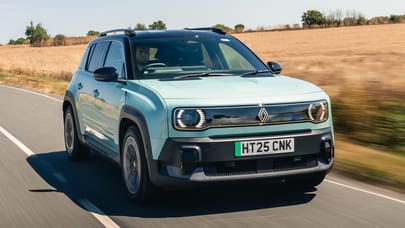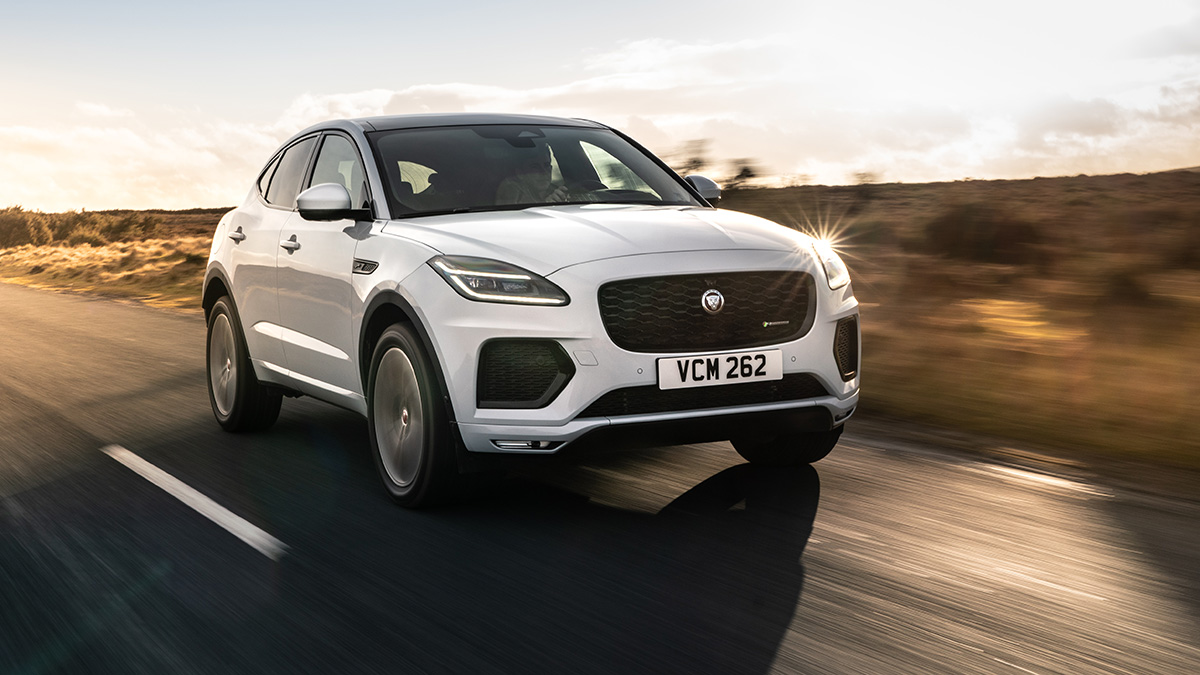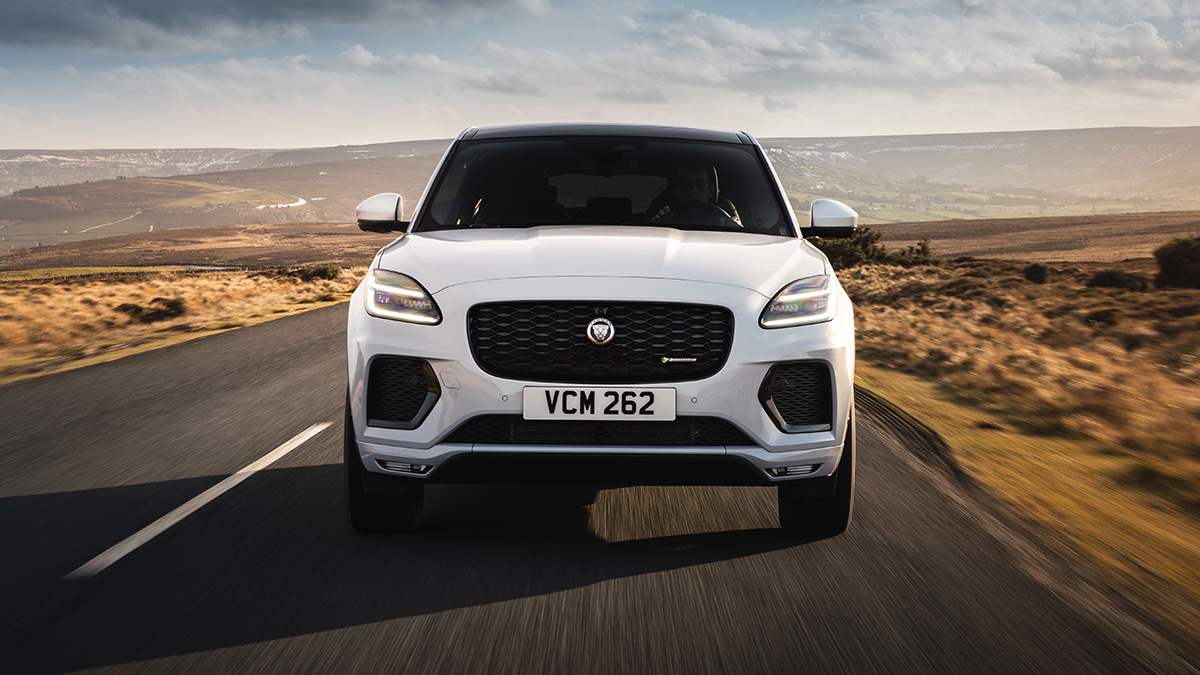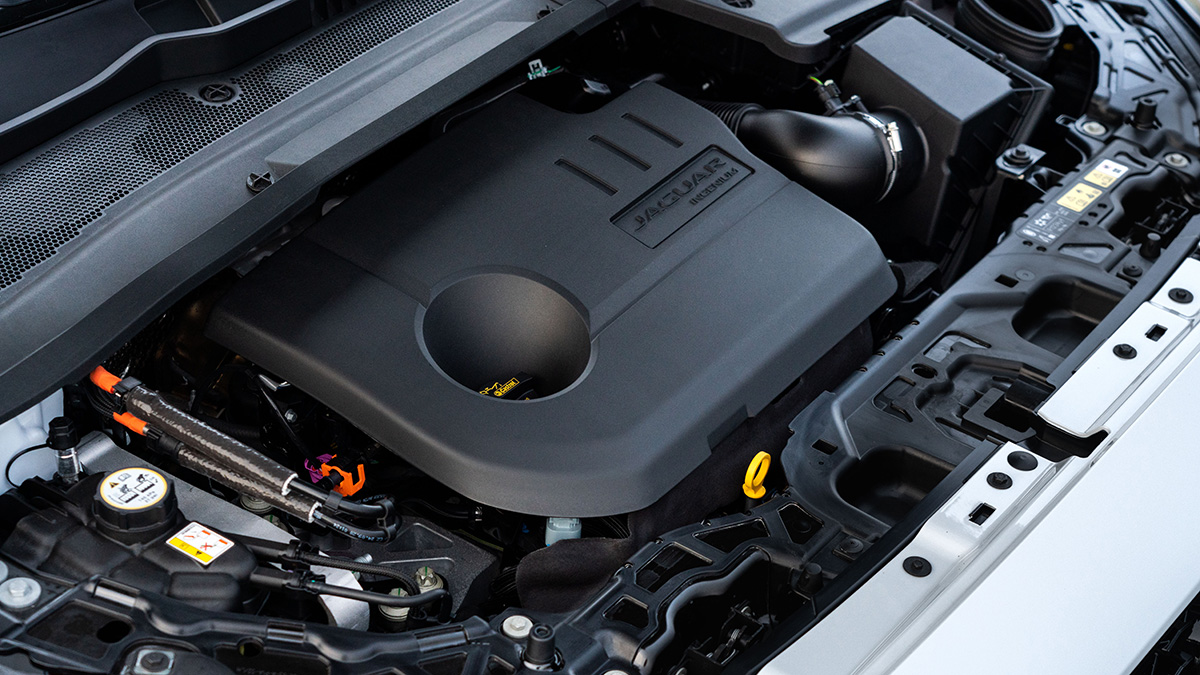
SPEC HIGHLIGHTS
- Battery
Capacity12.2kWh
- BHP
309bhp
- 0-62
6.5s
- Max Speed
134Mph
Oh, lovely, are they still selling this?
You mightn’t have seen too many of these around the place, but that makes the car more exclusive, right? A shame more people haven’t cottoned on to the E-Pace, because we like it – it’s the Scrappy-Doo of the Jaguar range. It has to fight for attention, but it’s in danger of actually being quite fun.
It’s been on sale since 2017, though, so it’s due a bit of a tarting up and this facelift comes just in time. The small SUV end of the car market is probably the most closely fought over at the moment, with competition from all angles – not least from JLR relations. The Land Rover Discovery Sport and Range Rover Evoque might share underpinnings with the E-Pace, but that doesn’t mean they’ll give it an easy ride.
So what’s new?
The chassis has been made stiffer, there’s Jaguar’s latest infotainment system, Pivi Pro, which comes with an 11.4in touchscreen and there’s a fancier interior with improved materials and a sleeker look.
Outside, the bumpers have been tidied up, there are new LED headlights and the words that put dread into your heart as you read them – an ‘assertive’ grille. Thankfully it’s not as bad as it sounds, it looks alright.
What about this new plug-in electric model then?
Jaguar’s just launching two new PHEVs, actually, the E-Pace and larger F-Pace. The all-electric I-Pace has been on sale for a while, but a follow-up has been slow.
The E-Pace PHEV comes in three different specs, ranging from £46–£50k. It’s an ambitious topper to a car line-up that starts around £38k, but like any premium wagon it wears its top-spec status with pride and gets better the more you throw at it.
It’s stealthy, too, with not much to advertise your eco-credentials to the neighbours. It’s very likeable, though, more so than the Evoque, which seems well on its way to proving the adage that familiarity breeds contempt.
Top Gear
Newsletter
Thank you for subscribing to our newsletter. Look out for your regular round-up of news, reviews and offers in your inbox.
Get all the latest news, reviews and exclusives, direct to your inbox.
The plug-in E-Pace gets a 15kWh battery mounted midships for up to 34 miles of range. A rear-mounted electric motor produces 108bhp and 192lb ft of torque, while the 3cyl petrol unit manages 197bhp and 207lb ft. The E-Pace has a 7kW onboard charger, or you can plug into a DC fast charger and pick up 32kW for a faster fill.
Isn’t this Jaguar’s first 3cyl motor?
It is – the engine has seen action in the Land Rover line-up, but this perky motor works well here. Its thrummy note and eagerness to rev add a bit of drama to proceedings that could otherwise get quite dull. Will all these complicated electronics and a busy eight-speed auto transmission it would be easy for the driver to feel a little left out of the loop, but the E-Pace’s strong handling veers it away from turning dull.
What’s the point in going full EV if you can have this?
PHEVs are the better option for many drivers right now – you don’t get the same charging anxieties, but the zero emission capability is there to exploit. Realistically you’ll get somewhere in the mid-20s when it comes to EV range, rather than the optimistic official 34 miles.
It’s an obvious disclaimer, but you won’t get earth-shattering mileage out of the car unless you happened to only do return journeys of 25 miles or less and were happy to settle for living with a weedy electric motor.
What’s the E-Pace like to drive?
The baby Jaguar does well enough within the confines of its design – an SUV is never going to beat a half-decent car when it comes to drivability, but the E-Pace feels pointy, stable and reliable through corners. If there’s one ergonomic gripe, the brake pedal support bends to the right above the accelerator and could catch out those with large shoes.
Jaguar usually favours aluminium underpinnings to keep the porkiness down, but the E-Pace has steel bones inherited from its Land Rover cousins – it’s actually heavier than its distinctly larger F-Pace sibling, but doesn’t really feel it. Probably thanks to heavy items like the battery and electric motor being dispersed across the car, but there’s minimal roll on the move.
What about the interior?
Jaguar’s made a reasonable step forward with the E-Pace’s interior. The new Pivi Pro infotainment system comes with an 11.4-inch touchscreen that’s easily customisable and yields what you need within a tap or three, no vast depths of intricate sub-menus here.
There’s a step up in interior quality too, with the cabin feeling more stylish and cohesive than before. The dash remains driver-oriented and Jaguar has managed the balance of buttons and touchscreen well. The ventilation controls have their idiosyncrasies, but you’d soon get used to the set-up with time.
There’s a decent amount of room to sit in the back, but nevertheless it feels slightly oppressive thanks to thick pillars, a high beltline and small windows that create a bit of a claustrophobic atmosphere.
Practicality hasn’t been overly harmed by the addition of the plug-in set-up – the boot remains of decent size, but there’s a noticeable hump in the boot floor.
Should I buy one?
The plug-in E-Pace makes a strong case for itself, especially if you’re looking at a company car and want something with a low BiK tax rate. If you’re comparing it with rivals then the Volvo XC40 plug-in is distinctly cheaper (ranging from around £39k to £43k, the whole range sits below the E-Pace’s £46k start price) and more stylish, but doesn’t have the handling prowess of the E-Pace. It also offers less EV range than the Jaguar.
The Range Rover Evoque PHEV probably puts up the sterner test for the E-Pace, undercutting it on entry price but more expensive in top spec (£45k–£51k). The Jaguar is definitely the more desirable of the two in our eyes, though.
Score: 7/10
Featured







